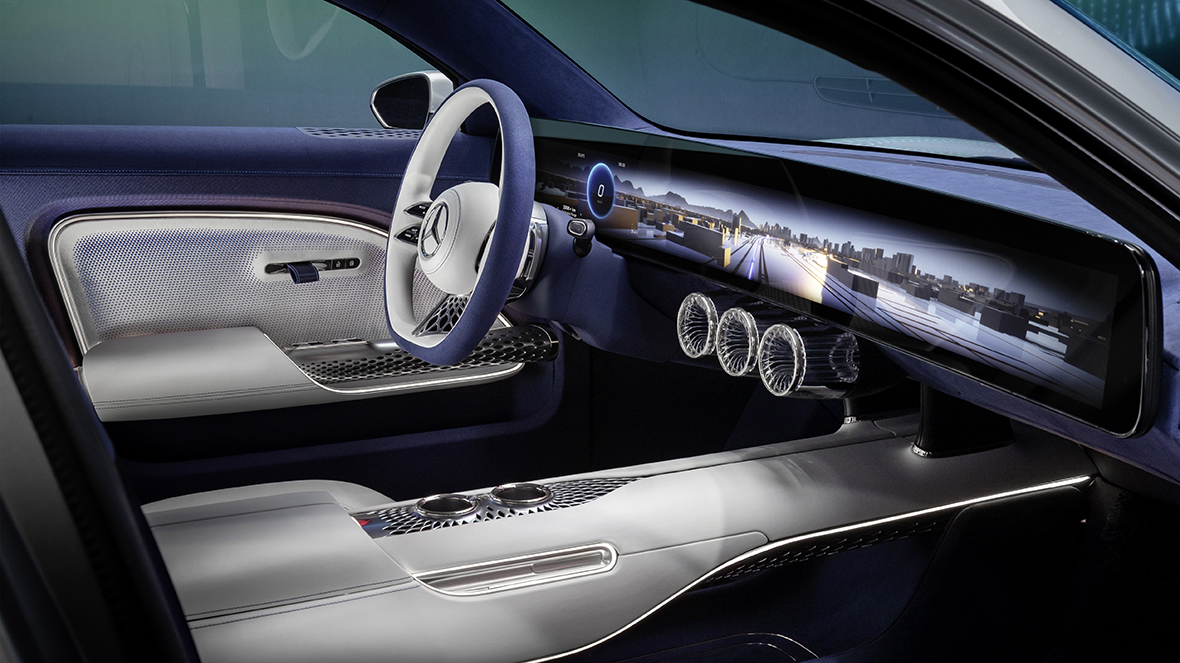use artificial intelligence to adjust car settings based on the habits and preferences of the owners
A new Unity operating system will roll out to the lineup for the 2024 model year

The new operating system, simply called the Mercedes-Benz Operating System, or MB.OS , will be developed by Unity Technologies and will replace the current MBUX infotainment system used by all Mercedes models. This is expected to happen for the 2024 model year.
Unity Technologies is an expert in the development of 3D platforms that underpin 70% of all mobile games on the market. It is also a leader in augmented and virtual reality technologies.
Mercedes-Benz designers will use the Unity Industrial Collection, a comprehensive 3D product visualization software package, to refine the user interface and shape the user experience in the digital cockpit, including the instrument panel, infotainment and passenger displays.
Unity’s operating system will connect all Mercedes-Benz cars in the cloud and with the Internet of Things. It consists of four main areas: drive, autonomous driving, infotainment and comfort and cabin control systems.
The new Mercedes-Benz Operating System will offer audio and video streaming, in addition to engaging gaming and chat applications. It will also offer an augmented reality experience and use artificial intelligence to adjust car settings based on the habits and preferences of the owners . This system was first presented in the Mercedes-Benz Vision EQXX concept and includes sophisticated 3D real-time graphics.
Unity says it was selected after an extensive evaluation process in competition with other real-time 3D and Human Machine Interface (HMI) solutions.
“We will see completely new visuals powered by our Unity 3D-Game Engine, creating an extremely realistic representation of the real world,” added Ostberg. “This is what we call ‘digital luxury.’ “
A modification in the way electric cars are charged can reduce the battery charging time to 90% in 10 minutes. A standard approach would take half an hour
EVs have come a long way in the last decade, literally and figuratively, because modern electric models now go a long way on a single charge. But there still remains the long loading time deterrent.
If a person does not want to eat and drink at a station for 30 minutes (provided that we are talking about a fast charging station) while waiting for his car to charge its battery for about 250-300 km, that is a problem. But experts say the next generation of electric cars will be able to charge their batteries to 90% in 10 minutes.
A standard charging protocol usually starts at low power, gradually increasing it, but then dropping again when reaching 60-70% charge to avoid unnecessary stress on the battery. This is done to protect the battery if it charges too quickly.
Eric Dufek of the Idaho National Laboratory and his colleagues have developed artificial intelligence algorithms to understand how strain and voltage affect battery life. Their ultimate goal is to achieve ultra-fast charging without damaging the battery.
Using computer models and studying the results of the charging effect of real batteries, the team has created a new charging protocol that can charge a standard electric car to 90% in 10 minutes, protecting the battery’s lifespan. The problem is that this technology needs 5 years to go into mass production.
Most of what has been learned so far about the improved protocol will be applicable to many of the batteries because the basic chemistry in lithium-ion batteries is the same, Dufek says. But each company will need to tailor the protocol to the specific package design.
The protocol can be introduced by updating the software in the vehicle that controls charging. And it can be done at no cost.
But even the most optimized protocol cannot be the main factor in reducing the loading time. It will come from improving battery chemistry and faster charging technology.